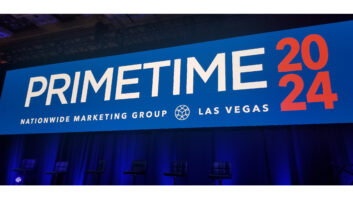The Consumer Electronics Association (CEA) averted a CES fistfight in the days leading up to the show by sending proposed new nomenclature for digital television displays back to committee for further evaluation.
At issue was a CEA Video Board committee’s recommendation to adopt the labels “HDTV monitor” and “enhanced digital monitor” to designate various classes of DTV tunerless displays. However, at press time the issue had been sent to a newly appointed DTV technical working group for further review. Before such labeling is approved in final form, it must pass a vote of the full CEA Video Board.
Further clarifying the issue, CEA asserted that all such terms are “voluntary industry definitions for digital television.”
In another move, the Video Board unanimously agreed to a resolution that NTSC-only products (15.75kHz scanning frequency) should not be marketed “as having any particular DTV capability or attributes,” allowing consumers to distinguish between analog and digital television products. The board also agreed to a new definition — “DTV audio ready” — for audio products compatible with DTV equipment.
Two weeks prior to CES, controversy arose around proposed labeling of high-scan displays. Such ATSC tunerless displays that are capable of presenting a full-width 16:9 picture with all 1080i or 720p lines of vertical resolution were to be called HDTV monitors. Tunerless high-resolution monitors that will display 480p were to be classified enhanced digital monitors.
The problem was that Hitachi and Toshiba have been calling high-scan monitors with 4:3 (almost square) aspect ratios “HDTV-ready” monitors. According to the ATSC, HDTV pictures must have 16:9 (wide) aspect ratios and be able to display resolution levels of 1,080 interlaced vertical lines or 720 progressively scanned lines.
In order for sets with 4:3 aspect ratios to display a wide 16:9 image, the frame must be reduced to fit the full width of the picture, creating a “letterbox” configuration on the screen. When this happens in some Hitachi or Toshiba monitors, less than the full 1,080 or 720 vertical lines are scanned.
According to Gary Bennett, Hitachi sales executive VP, his company’s HDTV-ready models were intentionally designed to display less than the full vertical resolution of the 1080i or 720p HDTV broadcast formats. This was done to reduce the potential for burn-in of the letterbox frame on the square 4:3 frame. Other competitors’ high-scan monitors with 4:3 screens will resolve all of the necessary lines of HDTV resolution but are more prone to the screen burn-in problem, he said.
Toshiba and Hitachi scan the entire 4:3 image at all times and use gray bars at the top and bottom of the letterbox images to reduce the burn-in problem. The Hitachi sets will present more than 800 lines of vertical resolution, which Bennett feels is virtually indistinguishable from other HDTV displays to the untrained eye.
CEA said the Video Board is now considering “additional definitions to describe the various performance levels of DTV and the component nature of products available.”













